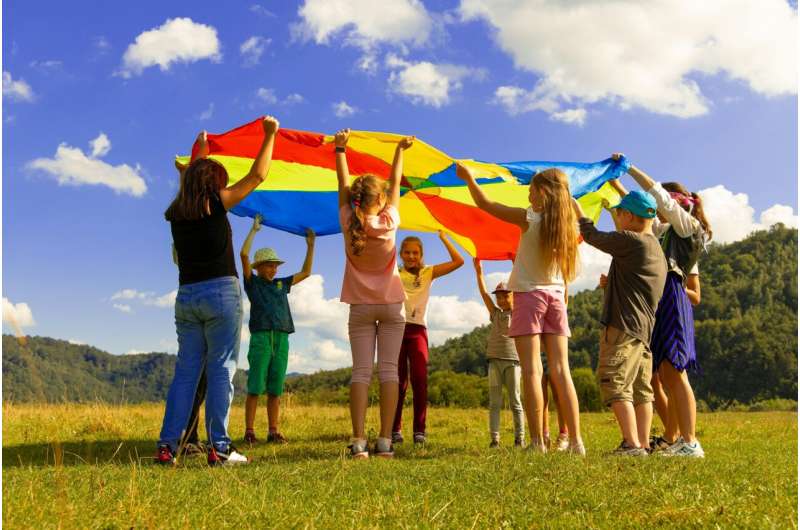This article has been reviewed according to Science X's editorial process and policies. Editors have highlighted the following attributes while ensuring the content's credibility:
fact-checked
reputable news agency
proofread
How to keep young athletes and active kids safe in hot weather

Whether a child plays organized sports or just loves being active outdoors, hot weather can pose serious health concerns.
As temperatures in all parts of the U.S. trend upward, kids face a rising risk of weather-related illness such as heat exhaustion and heat stroke. This includes exertional heat stroke (EHS), linked with intense exercise in hot weather. Exertional heat stroke is a leading cause of sudden death in high-school athletes, particularly football players.
On hot days, children will sweat. As the moisture on the skin evaporates, it takes some of the body's heat with it. But sweat might not be enough to keep a child cool, especially if they don't drink enough water or if the humidity level is high.
Body temperatures may begin to rise. This can make a child's heart race as it struggles to pump blood throughout the body.
If they don't take a break to hydrate enough, cool off and rest, kids might experience muscle cramps, dizziness, headache, nausea or vomiting, excessive sweating (or cold clammy skin), drowsiness or confusion, or a loss of coordination.
Symptoms like these may point to heat exhaustion, which means it's time to stop playing and ask an adult for help. When kids don't get immediate attention, they can suffer heat stroke, which involves a body temperature above 104° F. At this point, they may faint, suffer seizures or even die. Heat stroke is a medical emergency.
How is 'extreme heat' measured?
The heat index was created by the National Weather Service to help describe how people may feel outdoors when temperatures rise. This index combines air temperature and relative humidity to predict the "real feel" we experience in hot weather.
Another measurement using special equipment, the wet bulb globe temperature, can give more accurate, site-specific heat stress readings with factors like playing surface, shade and wind exposure.
On humid days when the air is saturated with moisture, evaporation slows down, making us more vulnerable to heat illness.
Even modest temperatures of 75°F to 80°F can be dangerous if the heat index reaches 90°F — the threshold for caution when playing or working outdoors. A heat index of 105°F or above indicates a "danger day" when kids and families should limit time outside.
Kids who are active in sports aren't the only ones at risk for weather-related illness when it's hot out. So are those who perform in marching bands, work at amusement parks or handle lawn and garden tasks, for example. And heat illness is also not unique to the outdoors—it can also affect kids who work or exercise in uncooled indoor spaces such as field houses, barns or enclosed swimming pools.
Here are tips that can help protect children and teens from overheating year-round:
Also as fall approaches, with its heavy equipment and intense exercise, the sport of football has one of the highest rates of environmental heat illness. Players may be more prone to heat illness early in the season after summer break.
Other sports like cross-country running and soccer also have higher heat illness rates. To help keep kids safe, parents can be proactive by working with school athletic directors, training staff and coaches. Make sure there is an environmental heat illness policy in place, as well as an emergency action plan.
Since no two kids respond to the heat in exactly the same way, it can be helpful to ask your child's doctor for pointers. Pediatricians can offer specific advice and a personalized plan for kids with health conditions, those who take medications or those who live in hotter parts of the country. Write down any questions you have—and mention any regular sports or activities that will expose your child to high temperatures.
2024 Tribune Content Agency, LLC.




















